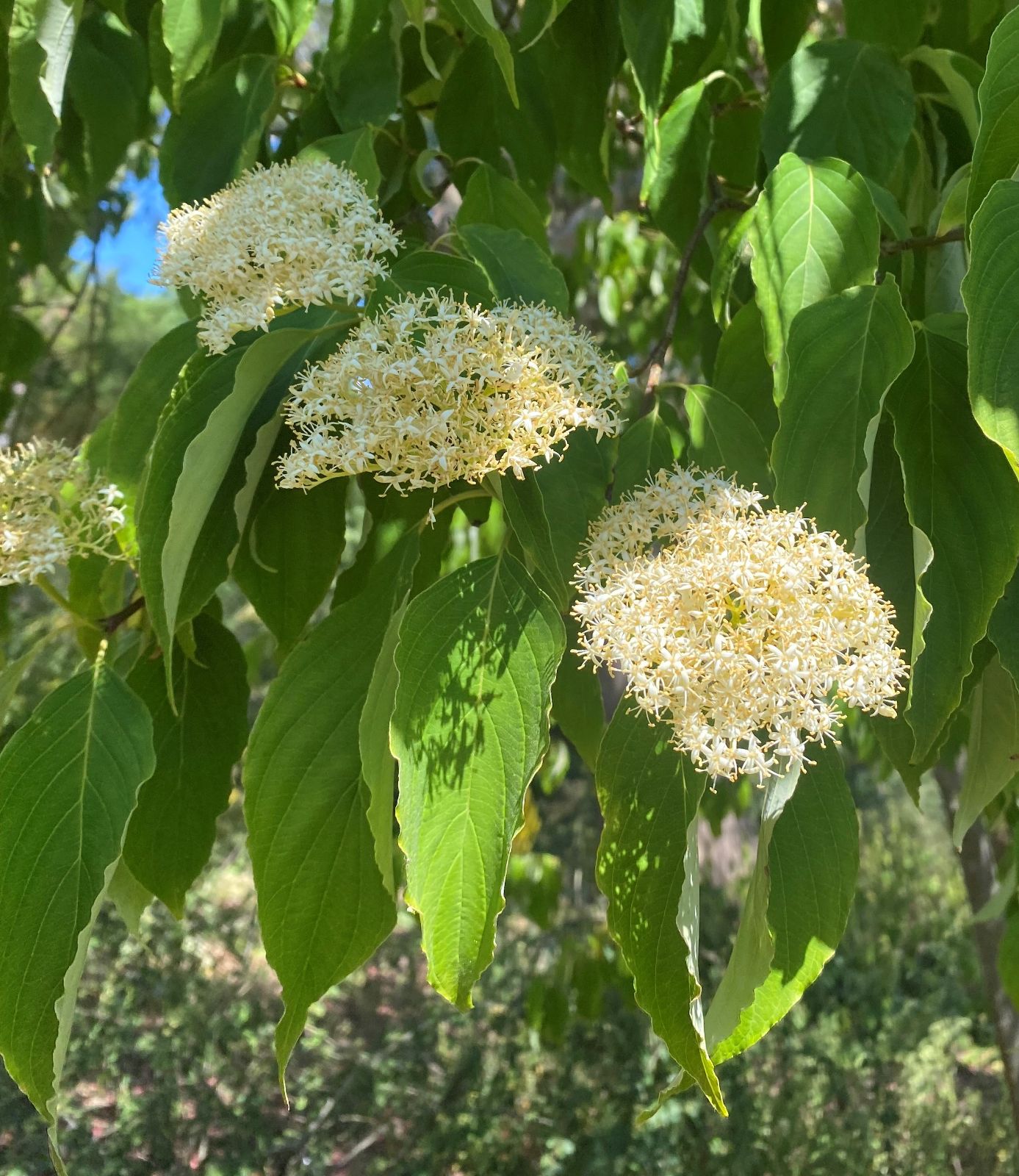Cornus × dunbarii
Credits
New article for Trees and Shrubs Online.
Recommended citation
'Cornus × dunbarii ' from the website Trees and Shrubs Online (treesandshrubsonline.
Genus
- Cornus
- C. macrophylla × C. asperifolia
Other taxa in genus
- Cornus alba
- Cornus alternifolia
- Cornus amomum
- Cornus asperifolia
- Cornus australis
- Cornus baileyi
- Cornus canadensis
- Cornus capitata
- Cornus chinensis
- Cornus controversa
- Cornus elliptica
- Cornus florida
- Cornus glabrata
- Cornus hemsleyi
- Cornus hessei
- Cornus hongkongensis
- Cornus × horseyi
- Cornus kousa
- Cornus macrophylla
- Cornus mas
- Cornus monbeigii
- Cornus nuttallii
- Cornus occidentalis
- Cornus paucinervis
- Cornus racemosa
- Cornus rugosa
- Cornus sanguinea
- Cornus schindleri
- Cornus sessilis
- Cornus stolonifera
- Cornus wilsoniana
Shrub or tree to ~6 m. Branchlets somewhat four-angled, with appressed trichomes at first, becoming purple then brown, shortly longitudinally fissured. Leaves deciduous, 6–12(–16) × 2.5–6 cm, chartaceous, elliptic-ovate to oblong-ovate, base cuneate, upper surface yellowish-green, with short appressed trichomes, lower surface glaucous green, pubescent with appressed or upright, straight or curved, white trichomes, sometimes pubescent along midrib, five to seven secondary veins on each side of the midvein, margins entire, apex acuminate; petiole 1–2 cm long. Inflorescences corymbose, 5–6.5 cm diameter, peduncle 3–3.5 cm long, peduncle and pedicels pubescent; bracts minute, not petal-like. Flowers with petals 0.3–0.4 cm long. Fruits subglobose, 0.5–0.6 cm diameter, blue at maturity, with one stone; stone 0.4 cm long, slightly compressed, faintly ribbed. Flowering in spring to summer, fruiting in autumn. (Rehder 1922).
Habitat In cultivation only.
USDA Hardiness Zone 7-8
RHS Hardiness Rating H5
Conservation status Not evaluated (NE)
Cornus × dunbarii was the subject of an investigation in the 1970s by C. Lewis Kehne, then a student at the Arnold Arboretum, who was intrigued by a plant he discovered there for which no references could be found. This research (Kehne 1978) revealed that in about 1910 a batch of seed from Cornus macrophylla was sown at the Rochester Parks Department, New York, from which two anomalous plants stood out as the seedlings matured. These were determined by Alfred Rehder of the Arnold Arboretum to be hybrids of C. macrophylla with C. amomum (which he named C. × horseyi) and C. asperifolia, which became C. × dunbarii: John Dunbar was then Superintendent of the Rochester Parks System.
Kehne found one specimen of C. × dunbarii at the Arnold Arboretum; his description is repeated verbatim here: ‘The single tree in the collection of the Arnold Arboretum is now 20 feet [c. 6 m] tall with a checkered bark on a trunk 10 inches [25 cm] in diameter. It is densely branched with a spreading habit. Some branches nearly reach the ground and many are contorted and rope-like in appearance. Although it bears most of its delicate white flowers in tightly packed corymbs in late June and early July, the plant continues to produce flower clusters into October. Fall color is not outstanding and the fruits are blue-black in contrast to the reddish pedicels and inflorescence branches.’ In his opinion it merited wider cultivation, particularly for its extended flowering season.
This has not come to pass however and this remains a rare plant. Two plants propagated in the 1970s remain at the Arnold Arboretum, and there are two specimens at the Sir Harold Hillier Gardens dating from the 1990s, where they are about 4 m tall in 2022 (Kevin Hobbs, Instagram post 18 July 2022).


